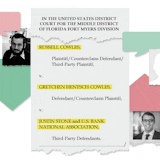With so many free social networks available -- LinkedIn, Facebook, Twitter -- why join a dues-based, face-to-face business referral group?
Perhaps the answer lies in the old adage, "You get what you pay for."
"You get out of your membership what you put in," said Cheri Marchio, who has been a member of Business Networking International (BNI) for four years and has served as vice-president of her chapter since October 2010. The BNI website says it's "the largest business networking organization in the world." Established in 1985, BNI had more than 133,000 members worldwide as of 2010. BNI's trademarked phrase is "Givers Gain."
"You need to put in a time commitment to really get to know the other businesses," Marchio said. "You meet with fellow members outside the weekly meeting times. That way, you get to know 30 people really well. The other chapter members become your 'sales force.'"
The BNI website lists 92 chapters in the Twin Cities metro area. Marchio advises visiting several chapters before deciding which one to join. "If someone comes to a meeting and says 'I want to join,' a couple of the members will meet with them and say 'How many other chapters have you been to?' Each chapter has its own personality."
Natural partners
"Look for synergy within the chapter," Marchio added. "Are there natural referral partners there?" She suggests looking for ways to create "sphere groups" within the larger chapter memberships. For example, a marketing consultant, a graphic designer and a printer could work together to "share the customer."
One limitation with many networking organizations, from professional associations to LinkedIn groups, is that they can bring you into contact with more competitors than clients. The paid referral groups, on the other hand, usually have rules allowing only one person in your business specialty. "You're not in a competitive situation in a chapter," Marchio said. "You really want to use that opportunity to work with people."


